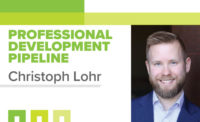As plumbing engineers, we need to constantly expand our knowledge to stay current with an ever-changing landscape (especially in today’s world where COVID-19 brings further uncertainty).
There seems to be a host of topics that we constantly need to learn about — hence the need for continuing education with ASPE. However, some of the largest unknowns for our industry are topics that still have not been discussed at the depth needed to be able to bring true value to building owners and the built environment: water quality, water chemistry and water microbiology.
Fortunately, there are resources coming to bear that are quickly allowing those without advanced degrees to understand more readily about these complex topics. Professional development must now include reading books on advanced topics to bring better understanding to plumbing challenges.
One book I have been recommending frequently in my seminars and webinars goes by the title “Troubled Water: What’s Wrong With What We Drink,” by Seth M. Siegel. As the book description indicates: “If you thought America’s drinking-water problems started and ended in Flint, Michigan, think again. From big cities to the suburbs to the rural heartland, chemicals linked to cancer, heart disease, infertility, birth defects and lowered IQ are routinely found in the water coming from our taps.”
With that kind of introduction, the most expertise-oriented plumbing engineers shouldn’t be able to resist picking up a copy.
Mr. Siegel, who has spoken on water policy hundreds of times around the world, including to Congress, the UN, the World Bank and dozens of leading universities, is able to bring his background as a layman to make complex water issues easy to understand as a non-PhD-scientist.
We start our journey into this world of water chemistry and water quality in Hoosick Falls, New York. PFOA — perfluorooctanoic acid — made its way into the water and began causing cancer, thyroid diseases and serious infirmities. Mr. Siegel paints a vivid picture through the eyes of a grieving Michael Hickey, who lost his father due to the PFOA in the water.
From there, the narration continues with the Safe Drinking Water Act and how it hasn’t been nearly as effective as it could have been, in large part due to lax requirements. One of the most terrifying examples was hearing the difference between European water policy vs. the American version. “In Europe, generally speaking, the burden is supposed to be on the chemical company to prove that the chemical is harmless before it can be introduced… By contrast, in the U.S., all chemicals are welcomed into commerce unless and until they are proven to be harmful.”
Mr. Siegel begins his case against the issue of pharmaceuticals that are now appearing in our water due to how pills are processed by the human body: “Because pharmaceutical products are inefficiently absorbed by the body, within a few hours, up to 90% of the pill is discharged as bodily waste. The drug companies understand how inefficient their products are and, to hit the intended target, nearly every pill has more drug in it than is needed. All of that surplus ends up in the toilet or, when sweated out, in the shower drain or washing machine.” The result? One example Mr. Siegel discusses is how excess estrogen from birth control pills is making its way into freshwater and causing abnormalities in fish populations. He then links this to how hospitals do not dispose of their wastewater any differently than the ordinary homeowner, in spite of most hospital occupants being near universal users of pharmaceuticals.
However, the unintended consequences Mr. Siegel discusses are the most terrifying. Some examples:
- When chlorine comes into contact with organics in the water, it breaks down into carcinogenic disinfectant byproducts (DBPs) such as trihalomethanes (THM) — THM-allowable levels have continued to be reduced due to research showing a link to cancer and THM in drinking water;
- Due to the prevalence of lead in piping, anticorrosion chemicals are added to the water to prevent lead leaching into the water. In many instances, it has been successful, however in many other instances elevated levels of lead have been found due to the anticorrosion compounds in the piping “shaking off” and coming into your home. As time has shown, a better, more holistic approach would have been to remove and replace the lead pipes entirely.
Mr. Siegel does provide possible solutions for the general populace to start implementing on their own. This book is a wealth of information for plumbing engineers of all experience levels. Reading this book will not only further your understanding of water in plumbing, but will lead you to improve your and your family’s health as well.


